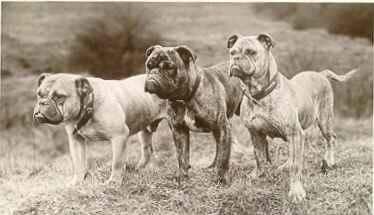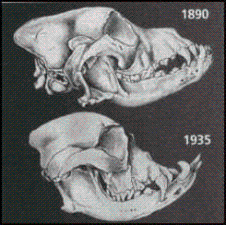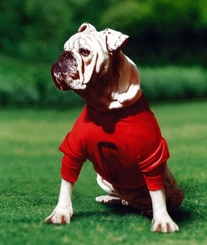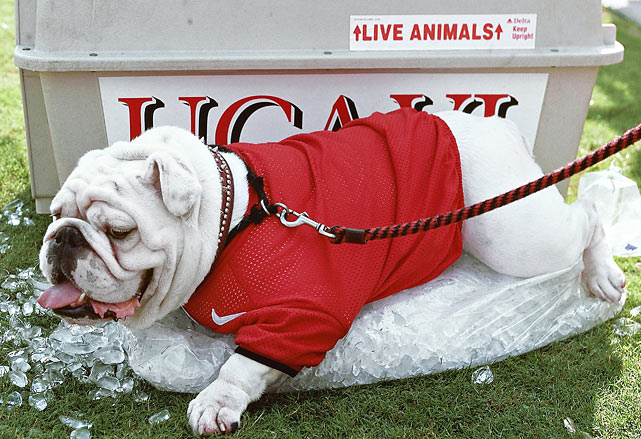Breed History
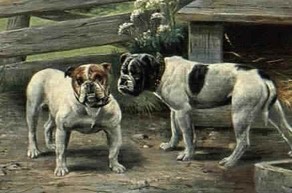
Between 1600 and 1700, the blood sport of bull baiting was extremely popular. The old bulldogs were bred to participate in these events. For this reason, they had to be agile, athletic, and possess extreme endurance and tenacity. They were able to keep low to the ground and travel across distance quickly to avoid being gored by the bull's horns. The trademark wrinkles were to prevent blood from pooling in the dogs eyes and the underbite was for gripping and holding despite being shaken by the bull. The broad chest and low, wide stance was so the dogs could keep low to the ground and move quickly under the bulls. The old bulldog was bred for function, not for fashion.
In the mid 18th century, the horrible sport of bull-baiting was, thankfully, outlawed. Unfortunately, this meant that the old bulldog had lost the purpose for which it had been created. Interest in the bulldog waned and the breed was nearly lost until dog fanciers took notice and began to breed them for the purpose of conformation shows. A bulldog for the show ring was a much different purpose and therefore the breed began to change and evolve. The intensity was bred out, the dogs were bred to be smaller and have less drive. As this evolution took place, the bulldog became more extreme in characteristics, thus creating the AKC English bulldog of today. The jaw grew more and more undershot since it was no longer for the purpose of gripping and holding, but to create a "trademark" look. Muzzles became shorter since agility and athletic ability was no longer the primary concern, the eyes became deeper set and as the chests became wider. The result was a very sweet natured, very wrinkled faced, and for all intensive purposes, a very cute, smaller dog. Unfortunately, it was also a dog that can be prone to very costly and sometimes debilitating health issues.
The Olde English Bulldogge is an attempt to recreate the original bulldog. They are bred to be functional, athletic members of the family. They are free breeders, breathers and whelpers and can flourish in nearly any climate. They still possess that endearing undershot jaw and wrinkled face, but because nothing about them is bred to the extreme, they do not require any special measures of care. They can actively participate in long walks or hikes, games of frisbee and fetch, they can swim and enjoy all aspects of family life. The aggression of the old bulldogs has been carefully bred out, a gracious legacy from the fanciers than otherwise nearly ruined the breed, but the fiercely loyal nature remains. The result is a solid, even-tempered animal that makes a wonderful, loyal and, most importantly, a healthy companion.
In the mid 18th century, the horrible sport of bull-baiting was, thankfully, outlawed. Unfortunately, this meant that the old bulldog had lost the purpose for which it had been created. Interest in the bulldog waned and the breed was nearly lost until dog fanciers took notice and began to breed them for the purpose of conformation shows. A bulldog for the show ring was a much different purpose and therefore the breed began to change and evolve. The intensity was bred out, the dogs were bred to be smaller and have less drive. As this evolution took place, the bulldog became more extreme in characteristics, thus creating the AKC English bulldog of today. The jaw grew more and more undershot since it was no longer for the purpose of gripping and holding, but to create a "trademark" look. Muzzles became shorter since agility and athletic ability was no longer the primary concern, the eyes became deeper set and as the chests became wider. The result was a very sweet natured, very wrinkled faced, and for all intensive purposes, a very cute, smaller dog. Unfortunately, it was also a dog that can be prone to very costly and sometimes debilitating health issues.
The Olde English Bulldogge is an attempt to recreate the original bulldog. They are bred to be functional, athletic members of the family. They are free breeders, breathers and whelpers and can flourish in nearly any climate. They still possess that endearing undershot jaw and wrinkled face, but because nothing about them is bred to the extreme, they do not require any special measures of care. They can actively participate in long walks or hikes, games of frisbee and fetch, they can swim and enjoy all aspects of family life. The aggression of the old bulldogs has been carefully bred out, a gracious legacy from the fanciers than otherwise nearly ruined the breed, but the fiercely loyal nature remains. The result is a solid, even-tempered animal that makes a wonderful, loyal and, most importantly, a healthy companion.
The evolution of the iconic white bulldog mascot of the University of Georgia from
Uga I to Uga VI demonstrates the differences between the original bulldog and the AKC bulldog of today.
Uga I to Uga VI demonstrates the differences between the original bulldog and the AKC bulldog of today.
